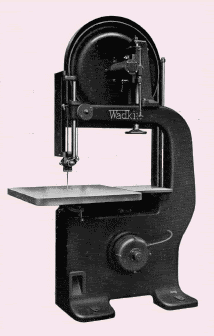jurriaan
Established Member
I have an opportunity to buy a big (stupendously enormous) Wadkin DR Bandsaw, 36" wheels.
What parts in particular should I look at in detail? Rubber on the wheels, guides, bearings - what can go wrong with a saw like that?
I haven't seen the saw in question yet, but the owner quotes a 380V, 16,6A engine running it. That would make it a 16 KW or 21 HP engine, which surely is over the top. Can anyone tell me what a standard engine for this saw used to be? I think/hope he's reading the engine details wrong!
Thanks!
Jurriaan
What parts in particular should I look at in detail? Rubber on the wheels, guides, bearings - what can go wrong with a saw like that?
I haven't seen the saw in question yet, but the owner quotes a 380V, 16,6A engine running it. That would make it a 16 KW or 21 HP engine, which surely is over the top. Can anyone tell me what a standard engine for this saw used to be? I think/hope he's reading the engine details wrong!
Thanks!
Jurriaan






